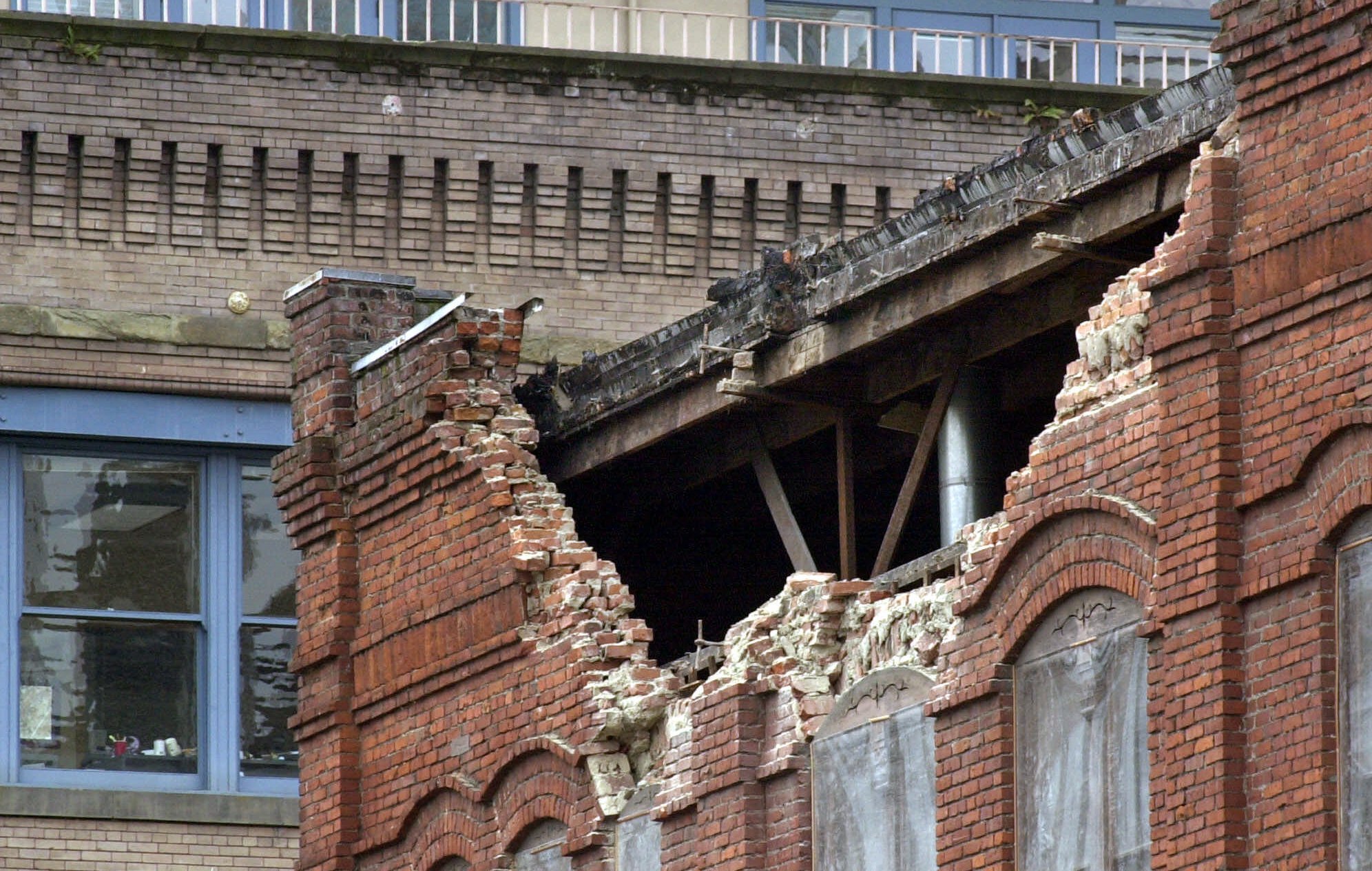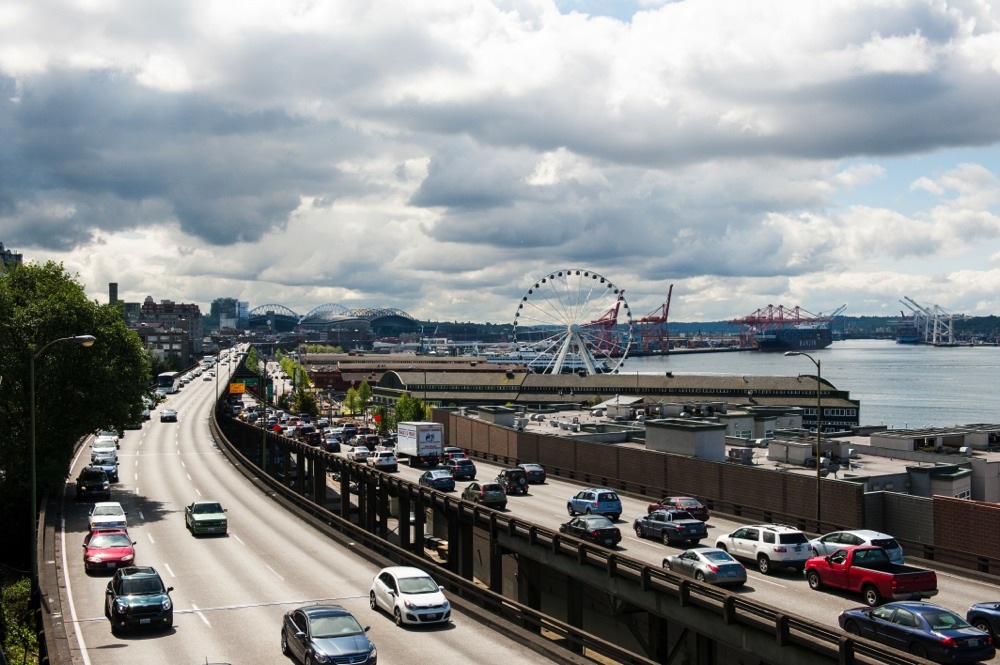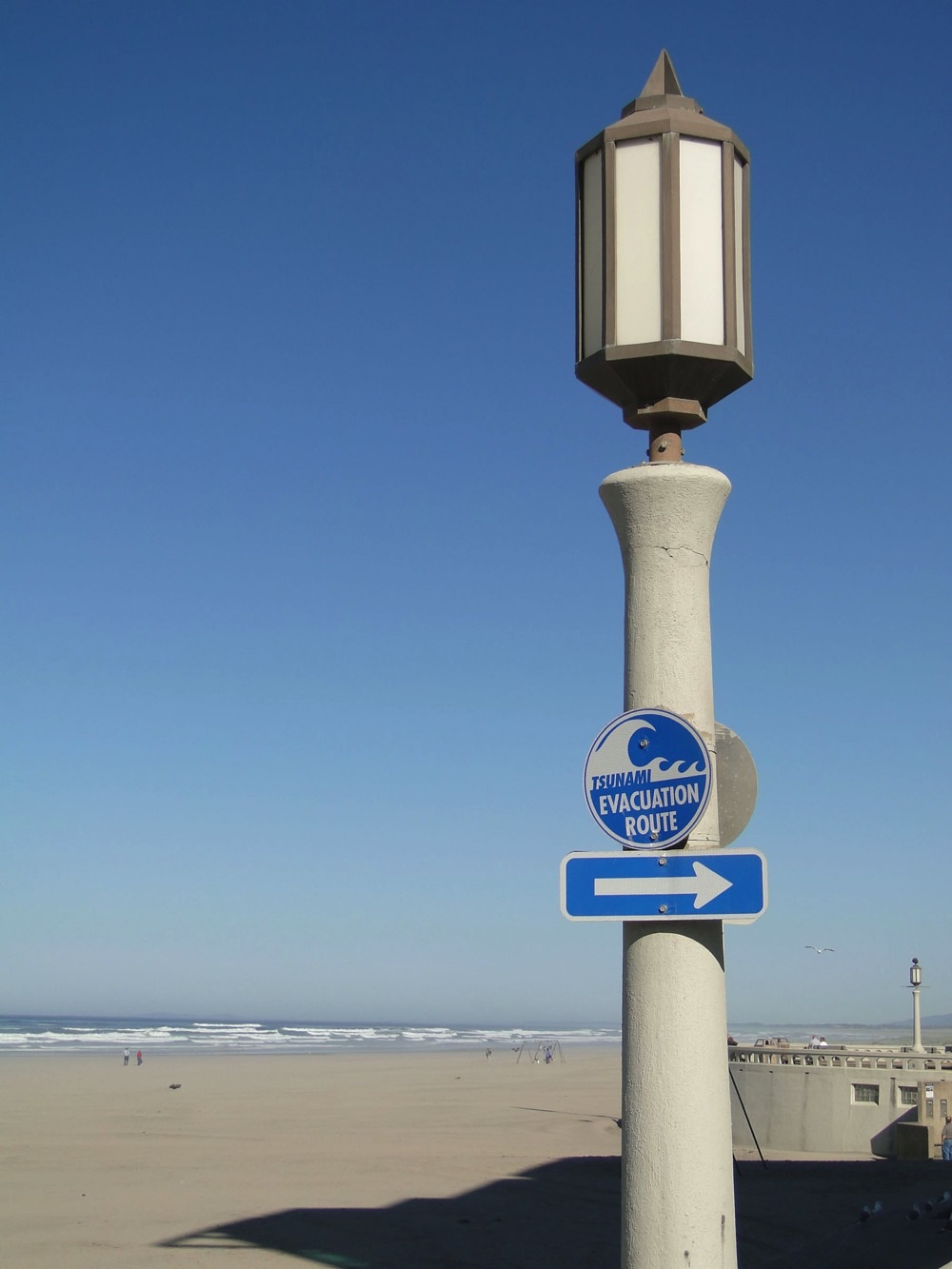Connecting state and local government leaders
When weighing the risks the entire region faces from next Cascadia megathrust earthquake, this future disaster is likely to rival anything the United States has ever faced.
SEATTLE — You’ve surely by now heard that the Pacific Northwest’s largest city will be destroyed in the next magnitude 9.0 Cascadia Megathrust earthquake, right?
“Our operating assumption is that everything west of Interstate 5 will be toast,” a Federal Emergency Management Agency regional director boldly said.
That was one of the eye-popping quotes from “ The Really Big One ,” a July 20 New Yorker article written by Kathryn Schulz that reminded those across the nation not paying attention to what most everyone in the Pacific Northwest has known (or should have known) for years: A great regional disaster is looming at some point down the road, a disaster the scale the nation has never experienced.
It will be scary and destructive; the region is not fully prepared; and the megaquake will test the limits of how governments and agencies at the federal, state and local level respond to and manage a widespread, multilayered crisis.
The next Cascadia megathrust earthquake, the Pacific Northwest’s Big One, will originate offshore along the Cascadia subduction zone and send a massive tsunami barreling into the coasts of Oregon and Washington. Although these coastal areas will experience the most intense shaking, the heavily populated corridor farther inland along Interstate 5, including Seattle and Portland, will also be shaken violently for several minutes.
Damage, especially to older brick buildings and structures in areas vulnerable to soil liquefaction, will be catastrophic. More than 10,000 people could be killed in the earthquake and tsunami, according to some estimates . Infrastructure across the region will be damaged or destroyed and coastal communities will be isolated for months.
Transportation and economic activity will be massively disrupted and a painful recovery will take years, especially for communities in the tsunami’s inundation zone, which will face crippling levels of destruction.
That scary megadisaster outlined in Schulz’s alarming article was not a surprise to anyone who has worked in emergency management in the region. The New Yorker article didn’t really reveal any new troubling predictions regarding the next Cascadia megaquake.
Science writer Sandi Doughton of The Seattle Times covered much of the same territory in her excellent 2013 book, “ Full Rip 9.0. ”
On Aug. 9 in The Times , Doughton and colleague Beena Raghavendran wrote a feature about the various seismic vulnerabilities of older, unreinforced brick buildings in Seattle and put the “toast” prediction in context:
Local emergency managers agree that a recent New Yorker article was more than a little over the top implying that everything west of Interstate 5 will be “toast” after the next Cascadia megaquake hits the Pacific Northwest.
That’s not to say that the risk isn’t real. It is. The New Yorker article was an attention grabber and renewed long-term questions about the what-ifs of the next catastrophic earthquake impacting a wide swath of the Pacific Northwest. It also helped boost sales of earthquake survival kits , which is certainly a good thing.
However, every person in the Pacific Northwest—from average citizens to stakeholders in state and local governments—has a lot of work to get ready for a megadisaster that might not actually come in their lifetimes.
That readiness includes, for citizens, having survival supplies stockpiled and emergency plans in place. On the government side, readiness includes having emergency resources available, personnel trained—especially in local jurisdictions—and coordinating with all the various agencies, departments, organizations and decisionmakers involved in response.
More broadly for the Pacific Northwest, readiness also includes getting a regional earthquake early-warning system system deployed as quickly as is feasible. While it can't predict when an earthquake is going to happen, such a system could give places like Seattle more than a minute’s worth of lead time before the destructive seismic waves from the Cascadia megaquake reach the city. (Good news: Real progress is being made on that early-warning system.)
Readiness also includes proactively strengthening buildings and infrastructure that are known to have serious seismic deficiencies. And Seattle isn’t quite ready on that front.
As Doughton and Raghavendran wrote on Aug. 9 regarding the risk posed by Seattle’s unreinforced masonry buildings, “little has been done to require owners to retrofit or even warn occupants that the walls around them are likely to collapse in a major quake.”
Governments in the Pacific Northwest certainly have a lot of difficult work to do to be even adequately prepared for the next Cascadia megaquake—and it’s simply impossible and too costly to be fully prepared. But the costs of doing nothing can be far greater.
Seattle has had an uncomfortable summer thinking about its future: Beyond the alarming New Yorker article, it’s been incredibly dry and this month, the severity of wildfires across the Pacific Northwest has made reckoning with the long-term local impacts of global climate change unavoidable, too.
The wildfires might be part of a “ new normal ” for places like California and the Pacific Northwest.
With the earthquake risk, the new normal is very much like the old normal. A future megaquake is looming and could come tomorrow, 50 years from now or 100 years from now. (The last Cascadia megaquake was in 1700 and the subduction zone remains locked and ready to release a lot of energy along a portion or the full length of the dangerous seismic zone.)
Regardless of the type of disaster risk, the strongest, most resilient communities should be preparing now for the uncertain future and all its potential impacts. But it can be difficult—and expensive—to be proactive in the face of very real and present threats, especially if the threat, like a massive earthquake, isn’t imminent.
“A risk in the future feels a lot less scary than a risk that’s presented right now,” David Ropeik, a risk-perception consultant, told CityLab in July following the publication of the New Yorker ’s article.
Ten years ago with Hurricane Katrina, New Orleans endured an entirely predictable disaster scenario where so much went wrong with the preparation and response. And the next Katrina-type of mass disaster—a situation that is highly disruptive and destructive for an entire region—could certainly happen in the Pacific Northwest. That threat is not new. It’s been a known known for more than a generation.
***
It was in Seattle in the summer of 2002 where I really started thinking about the risks posed by megadisasters that strike urbanized areas or across regions. I had recently started work as a Washington, D.C.-based consultant for the Federal Transit Administration working on a emergency preparedness traveling program that aimed to bring local transit agencies, first responders and emergency management stakeholders together into the same room for multi-day “ Connecting Communities ” gatherings.
The Sept. 11, 2001, terrorist attacks, just like Hurricane Katrina, exposed shortcomings in how federal, state and local agencies were communicating in crisis situations where lives are on the line.
Local transit agencies can play an important role in disaster response but aren’t always well utilized by local partners. So part of our mission was to share some of the emergency management lessons from the 9/11 attacks and help build connections among important stakeholders that need to work together to effectively manage a crisis.
Seattle was my first travel assignment with “Connecting Communities,” which was being hosted in a downtown hotel near the Washington State Convention Center.
I was working on a small team with other consultants and FTA employees managing the traveling “Connecting Communities” events. My hybrid role involved being on the advance teams—the agency’s administrator or deputy administrator usually flew out from D.C. to deliver remarks, and I would usually put the briefing books together—and assisting the project managers hosting the events. When in D.C., I helped promote future scheduled “Connecting Communities” events and secure commitments from state and local agencies and other stakeholders to attend.
By the time my work wrapped on the project about six months later, I had traveled to Charlotte, Dallas, Denver, Houston, Hartford, Newark, San Francisco and San José.
I learned many valuable lessons about emergency management from first responders and various government and agency stakeholders. I also developed a greater understanding of the complicated challenges state and local governments face during emergency situations and the difficulties of connecting and coordinating with peer organizations from within the confines of jurisdictional silos—which has long been an intergovernmental challenge. It’s not easy.
Although 9/11 and the threat of terrorist attacks were very much the driving forces of the “Connecting Communities” program, in many of the cities I traveled to, natural disasters were often the leading concern, not terrorism fears.
In Denver, there was a lot of discussion involving wildfires; in Houston, a common thread was flooding; and in Seattle, stakeholders at the “Connecting Communities” event discussed scenarios involving disruptive Pacific storm systems and, to a lesser degree, earthquakes.
Specifics about the doomsday Cascadia megaquake didn’t really come up in the discussions. In one sense, a magnitude 9.0 earthquake is really too big to effectively plan for. And there are smaller quakes to worry about, too. In fact, the Seattle area had just weathered a sizable earthquake the previous year and came out relatively unscathed.
In February 2001, Seattle and the entire the Puget Sound region experienced a magnitude 6.8 earthquake centered near Olympia . The so-called Nisqually quake was a deep event—the epicenter was 32 miles down—so damage was comparatively limited across the region. Still, there was about $2 billion in damages and around 400 injuries ; one death from cardiac arrest was attributed to the quake. (A shallower quake with a comparable magnitude in an urbanized area would have been far more destructive and deadly.)

But damage was moderate to severe in localized vulnerable spots, like parts of Seattle built atop a landfill pushed into Elliott Bay, including the Pioneer Square neighborhood adjacent to downtown and the waterfront.
The Nisqually earthquake damaged many of Pioneer Square’s older buildings and today, more than 14 years later, you can still walk around the historic district’s streets and see seismic scars.
Many decorative, ornamental parapet walls—features that typically form a building’s roofline—were damaged in the quake and never replaced. They can break off a building during a sizable earthquake and rain dangerous debris down onto sidewalks, injuring or killing passersby.
The most menacing reminder of the seismic risks Seattle faces is the double-decker Alaskan Way Viaduct , which carries heavily-trafficked State Route 99 along Seattle’s Elliott Bay waterfront. Parts of the viaduct were damaged and sank a few inches during the 2001 earthquake; the southern section was demolished.
But the remaining section of the outdated structure is still in use and has a high likelihood of collapsing in the next major quake, with the upper level pancaking onto the lower level.
A waterfront tunnel that’s under construction will replace the viaduct, eventually. The complicated construction project has been bedeviled by problems with a tunnel-boring machine named Bertha (that’s a tangled side story, to say the least).
In the meantime, the clock is ticking on the seismically vulnerable Alaskan Way Viaduct, which is heavily used by commuters and remains a potential death trap.

Following the Nisqually quake, there was renewed interest in retrofitting Seattle’s seismically vulnerable buildings, but there was no political solution at Seattle City Hall to mandate the costly seismic upgrades.
Still, walking around downtown and other neighborhoods, it’s fairly easy to spot buildings that have seen structural improvements. Diagonal and X-shaped bracing are visual statements declaring a building is less likely to harm or kill its occupants during a serious earthquake.
Plenty of others need upgrades; there are around 800 unreinforced brick and masonry buildings in Seattle, according to preliminary surveys of the city’s seismically vulnerable structures. As Doughton and Raghavendran reported in The Times on Aug. 9, only 15 percent of Seattle’s older brick buildings have been retrofitted. Currently, seismic retrofits are only required for older brick and masonry buildings when there are also plans to do substantial remodeling or renovations to them.
Required retrofitting has been a longtime political hot potato that’s been put on the back burner at Seattle City Hall. Eric Holderman, a former director of King County’s Office of Emergency Management, told The Times : ‘There’s nobody banging on the mayor’s door or the council’s chambers, saying: ‘Why aren’t you doing this?’”
Seattle lags far behind many California jurisdictions, where there are tougher mandates on retrofitting dangerous buildings—55 percent of vulnerable, unreinforced brick and masonry buildings have been retrofitted in the Golden State, according to The Times .
But Seattle is in many ways light years ahead of most other jurisdictions in the Pacific Northwest, especially those in Oregon, which was a late adopter for earthquake-resistant design in its state building codes.

Schulz’s report in the New Yorker was particularly critical of lackadaisical earthquake preparedness in Oregon, especially in seaside towns that are in the tsunami inundation zone and face unimaginable levels of destruction when the Cascadia megaquake hits:
These lax safety policies guarantee that many people inside the inundation zone will not get out. Twenty-two percent of Oregon’s coastal population is sixty-five or older. Twenty-nine percent of the state’s population is disabled, and that figure rises in many coastal counties. “We can’t save them,” [Seaside, Oregon, city planner] Kevin Cupples says. “I’m not going to sugarcoat it and say, ‘Oh, yeah, we’ll go around and check on the elderly.’ No. We won’t.”
That’s because these Oregon communities will only have a few minutes after the quake before the tsunami waves start inundating the coast. And seconds count when making decisions that will lead to either survival or certain death in a rapidly unfolding disaster.
***
One of the big impacts from Hurricane Katrina 10 years ago was the mass displacement of people from New Orleans. While it’s hard to put concrete numbers on the “Katrina Diaspora,” 400,000 people left the New Orleans area or the Mississippi Gulf coast temporarily or permanently following the hurricane. Cities, especially Baton Rouge, Houston and Dallas, took on many New Orleans residents leaving Katrina’s destruction.
The evacuation of New Orleans was chaotic and disorderly. It’s now a textbook example that shines an uncomfortable light on the difficulties of mass evacuations involving tens of thousands of people.
The future disaster zone in the Pacific Northwest will pose similar challenges for evacuation, except there will be more serious destruction to deal with in many areas.
The New Yorker ’s article laid out some pretty grim scenarios for the length of time it would take to restore public services to certain communities, if they ever are restored:
[The Oregon Seismic Safety Policy Advisory Committee] estimates that in the I-5 corridor it will take between one and three months after the earthquake to restore electricity, a month to a year to restore drinking water and sewer service, six months to a year to restore major highways, and eighteen months to restore health-care facilities. On the coast, those numbers go up. Whoever chooses or has no choice but to stay there will spend three to six months without electricity, one to three years without drinking water and sewage systems, and three or more years without hospitals. Those estimates do not apply to the tsunami-inundation zone, which will remain all but uninhabitable for years.
With those types of conditions, many Pacific Northwest residents will be forced to relocate, at least temporarily. In outlying areas, some may choose to gravitate toward more populated places like Seattle because there will be better—but not necessarily great—options to access relief services. Others will surely head east out of the disaster zone, to places like Spokane, Missoula, Boise and Salt Lake City.
Californians will face similar difficulties in the aftermath of future large-scale earthquakes, especially those in the vicinity of Los Angeles and San Francisco. Aqueducts supplying water to those densely populated areas could be knocked offline for months, depriving thirsty residents of stable water supplies, which are already strained due to the ongoing drought.
Are cities like Reno, Las Vegas, Phoenix and Denver ready to accommodate Californians displaced by future disasters? Time will tell.
As a nation, we know quite a bit about the disaster risks we’re exposed to. And disasters like the next Cascadia megaquake are a very real and gigantic threat but one, unfortunately, that doesn’t come with a firm date on the calendar. (With Katrina, it was known for days that a major hurricane was headed toward the Gulf Coast.)
Regardless, states and local governments need to take those risks seriously and be ready to respond whenever they come.
Time will tell whether with the next mass disaster we learned anything from the difficult lessons Katrina taught us about planning and preparations. It’s easy to forget what can happen when you’re not prepared.
Michael Grass is Executive Editor of Government Executive’s Route Fifty. He worked as a communications consultant at the Federal Transit Administration from July 2002 to January 2003 before working at a variety of publications, including Roll Call, DCist, The Washington Post’s Express newspaper, The New York Observer, Washington City Paper and The Huffington Post.

NEXT STORY: Route Fifty City-County Roadtrip Recap: Four County Courthouses in Ohio




